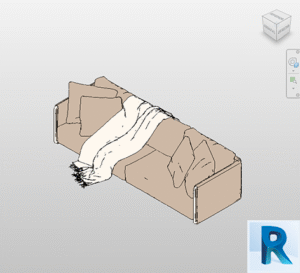The AECO sector (Architecture, Engineering, Construction & Operations) encompasses the planning, design, and construction of buildings and infrastructure. In this article, we will explore the key characteristics of the AECO industry, highlighting how professionals in these fields collaborate to create successful projects.
The main goal is to provide a comprehensive overview of the AECO sector, including its interdisciplinary collaboration, the use of digital technologies like Building Information Modeling (BIM), and the importance of effective planning and coordination.
What is the AECO Sector?

The AECO industry covers companies and professionals involved in designing, constructing, and maintaining buildings and infrastructure. This sector plays a crucial role in society by creating safe and functional spaces where people live, work, and gather.
Interdisciplinary collaboration is vital in the AECO industry. Architects, engineers, builders, and operators must work together to design and construct projects that meet the needs of clients and end-users. Effective communication and coordination are essential for project success.
Key Characteristics of the AECO Industry
The AECO sector is constantly evolving, requiring effective collaboration among architects, engineers, builders, and operators to design, construct, and maintain buildings and infrastructure. Successful projects depend on efficient communication and coordination.
Another essential aspect of the AECO sector is its complexity. Projects typically involve multiple stakeholders, diverse disciplines, and various technologies, necessitating a structured and planned approach. Effective information management and coordination across different project phases are critical to ensuring the final project’s success.
Interdisciplinary Collaboration
Interdisciplinary collaboration is a fundamental element in the AECO sector. Professionals must work together to achieve common goals, requiring close cooperation among architects, engineers, builders, and operators. Effective communication and coordination are crucial to the success of projects.
This collaboration involves understanding and working with different disciplines and specializations. Professionals need to analyze complex problems from multiple perspectives, allowing them to develop innovative and effective solutions. A culture of mutual respect and support, where every professional feels comfortable sharing information and knowledge, is essential for success.
Complex Projects and Precise Planning
In the AECO industry, planning is fundamental to ensuring the success of any project. Complex projects require a detailed approach and a deep understanding of the client’s needs and objectives. This includes identifying and analyzing risks, defining functional and non-functional requirements, and establishing a realistic project timeline.
Precise planning also involves effective coordination among various project stakeholders, including architects, engineers, builders, and operators. Clear and continuous communication, as well as a shared understanding of responsibilities and roles, are necessary. Common tools for planning and coordination in the AECO sector include Building Information Models (BIM), project plans, and project management systems (PM).
Use of Innovative Technologies
Adopting innovative technologies is crucial in the AECO sector, improving efficiency, reducing costs, and increasing productivity. Key technologies include Building Information Modeling (BIM), Augmented Reality (AR), and Artificial Intelligence (AI). For instance, BIM enables the creation of precise digital models, facilitating collaboration among different stakeholders and reducing errors. Real-time data analysis and visualization allow for informed decision-making and better project management.
AR and AI can have an even more significant impact on the AECO sector. Augmented Reality allows professionals to visualize and interact with digital models of buildings and infrastructure, aiding in planning and design. Meanwhile, Artificial Intelligence can analyze vast amounts of data and predict the behavior of buildings and infrastructure, leading to more informed decision-making and improved maintenance management.
The Importance of Effective Communication
Communication is crucial to the success of any project in the AECO industry. Collaboration among architects, engineers, builders, and operators requires fluent communication to share information, resolve conflicts, and make informed decisions. Effective communication is not only important during the construction process but also before and after it, as it involves managing expectations, solving problems, and evaluating performance.
Effective communication in AECO goes beyond simply transmitting information. It requires a holistic approach that considers the needs and objectives of each involved party and the ability to adapt to changes and adjustments in the project. Examples of effective communication in AECO include creating shared work plans, holding regular meetings, and using online collaboration tools.
The Role of BIM in the AECO Sector
BIM is a game-changer for the AECO industry. By centralizing all project information in a single model, BIM allows real-time collaboration, reduces errors, and improves decision-making. Adopting BIM requires a structured approach to its implementation, including:
- Planning and process mapping
- Defining roles and training
- Technology selection and integration
- Change management and communication
By embracing BIM, AECO professionals can improve project delivery, reduce costs, and enhance stakeholder satisfaction.
Advantages and Disadvantages of Using BIM
Using Building Information Modeling (BIM) in the AECO sector has revolutionized how buildings and infrastructure are designed, constructed, and maintained. Key advantages include:
- Improved collaboration and communication among project team members, reducing errors and increasing efficiency. Centralizing all information in a single model allows professionals to access accurate and up-to-date data in real time.
- Cost and time savings in construction through early identification of issues and process optimization. BIM also enables simulation of different scenarios and environmental impact analysis, facilitating informed decision-making.
- The ability to create more sustainable and energy-efficient buildings and infrastructure. BIM also allows for creating maintenance and repair models, reducing costs and minimizing environmental impact.
However, there are also notable disadvantages:
- The need for specialized training in BIM, which can be a barrier for some professionals.
Conclusion
The AECO sector is an ever-evolving field that requires effective collaboration among architects, engineers, builders, and operators to deliver high-quality projects efficiently and sustainably. Adopting technologies like BIM is essential for improving productivity, reducing errors, and making informed decisions.
As the AECO industry continues to evolve, it is crucial for professionals to continue developing skills and knowledge in digital collaboration, data analysis, and project management. By doing so, they can maximize the opportunities the sector offers and contribute to creating more sustainable and efficient buildings and infrastructure.
Free Revit families on Bimshares.com
Power by Baugam





